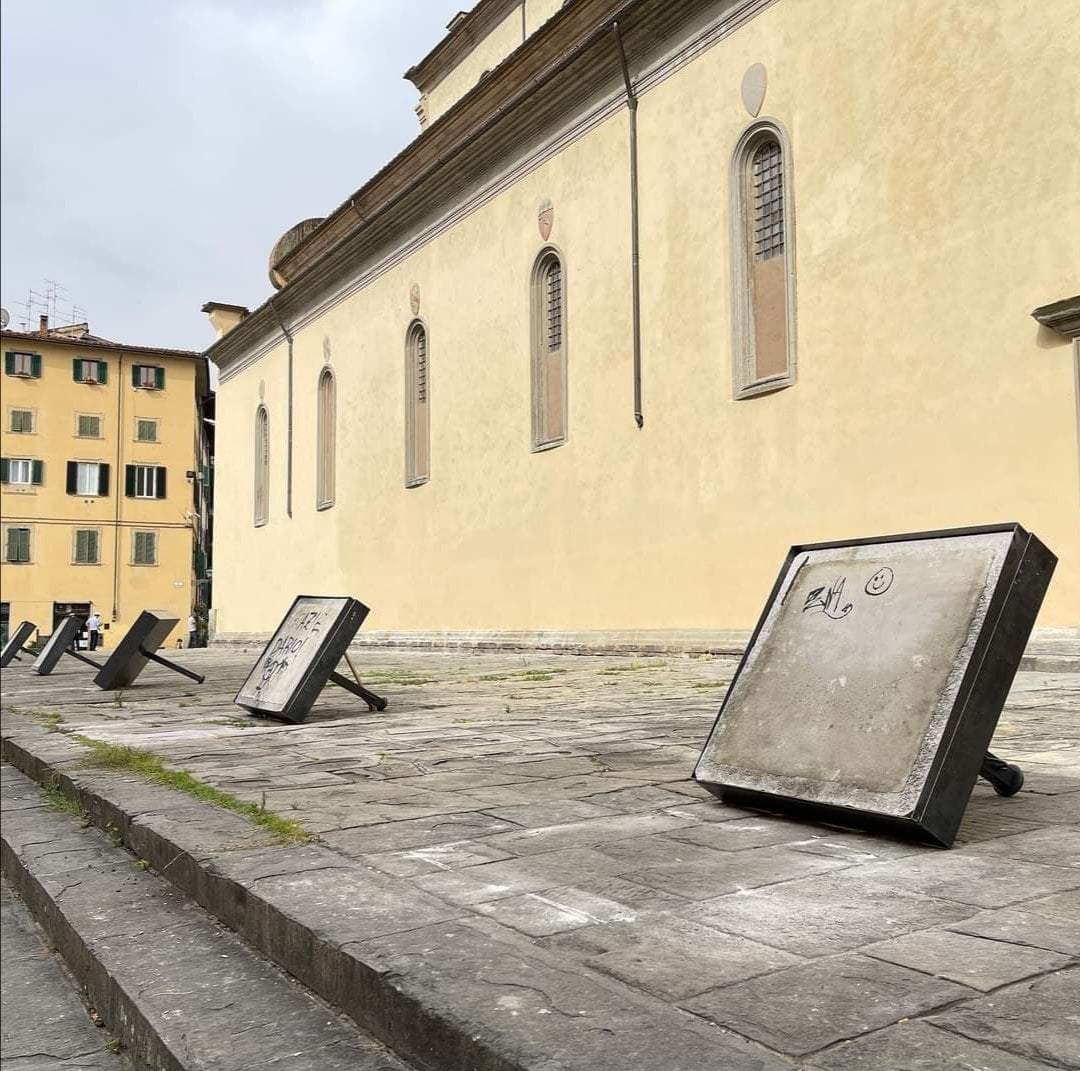Tens of thousands of euros thrown away: the cordonade on the parvis of the basilica of Santo Spirito in Florence, installed in recent days to create a buffer zone and prevent patrons of the square’s bars from occupying the parvis, lasted less than twenty-four hours. On the evening of Friday, June 18 (the same day on which city workers completed the installation of the cordon) several protesters, shouting “the square belongs to those who live in it,” occupied the churchyard, after which they tore up the ropes (they even used them to play jump rope) and then overturned the concrete bases. The end that the cordoning would come to, after all, was widely foreseeable: there have been many protests raised in recent days(including on these pages), partly because it is an intervention that, although reversible, disfigures the aesthetics of the square, and partly because the prohibition of access to the churchyard for patrons of the bars (thus forced to take their places at the tables that besiege that same churchyard, pushing all the way under the steps) was seen as an act of coercion.
Discounted, then, was the outcome of the experiment, which can only be called a failure. The cordoning alone cost 40,000 euros (and the operation includes another 40,000 euros for video surveillance and lighting systems, for a total of 80,000 euros): taxpayers’ money literally thrown away, also because, in order to enforce the ban on access to the churchyard, it would have been necessary in any case to send the police to the site to keep watch. On the issue of controls, the prefect of Florence, Alessandra Guidi, intervened today in an interview with Corriere Fiorentino: “Intervening with force,” she said in reference to Friday night’s demonstration, which was controlled by about fifty agents, “would have put hundreds of citizens in danger. We welcome criticism, but let it be constructive and proactive, avoiding dismissive tones that can end up heating up tempers and lead to drifts that are difficult to control.” And of the uselessness of the cordon the prefect herself spoke: “Until now, in Santo Spirito the situation was under control, already with only the planters [they were in the same position as the cordon before the latter was installed, ed.] This invasion of the churchyard was triggered by a reaction related to the protest against the curbs,” although nevertheless Galli agrees that “such a type of delimitation helps to make the message clear, including that there is a danger, pieces of plaster are coming off in the churchyard.”
At the end of the event, however, 43 people were identified and reported, on whom the charges of unauthorized demonstration, contempt of state bodies, violation of the ordinance, and aggravated damage hang, which will result in heavy penalties both administrative and, probably, criminal. On the part of the Municipality of Florence, Deputy Mayor Alessia Bettini intervened with an official note, speaking of “incivility”: “Unfortunately,” she said, “tonight’s episodes have shown that there are those who manifest their dissent with acts of incivility; on this we hope that there will be firm condemnation from everyone. We have said it from the beginning: the bollards represent an emergency measure, taken in agreement with the Prefecture, the parish priest and the citizens, in response to incivility behavior with respect to continuous appeals on our part that have unfortunately been systematically unheeded. This is an experimental, temporary and removable measure. To those who in recent days have expressed criticism about the aesthetic aspect we want to ask them to also make proposals; for our part we will relaunch the competition of ideas for a square to be lived in a civilized, open way and with respect for a churchyard that is a place of worship and one of the most beautiful places in our city.” Condemnation also came from Councillor for Security Benedetta Albanese: “These acts of incivility and vandalism must be isolated and condemned,” she said, “because urban security means being able to live in a respectful way in squares. For this reason, in Piazza Santo Spirito we have upgraded lighting, installed four new cameras and taken steps to protect everyone, managing these areas with coordinated controls between local police and law enforcement. Even in view of the transition to the white zone, yesterday’s behaviors do not represent a proper way of interpreting sociality and respect for the rules necessary to safeguard everyone’s rights and freedoms. We will therefore continue with presence and controls, sanctioning illicit behavior.”
What will happen next? It is clear that redoing the cordoning would make no sense. Some residents have come back to the fore with the idea of a gate, which would not be unwelcome even to the prior of Santo Spirito, who is notoriously opposed to “movida.” The prefect, on the other hand, is dropping hints that a closed number for entrances might be introduced. But in the meantime, the problem seems far from being solved.
In the photo, the cordon after Friday’s demonstration. Photo by Matteo Torelli
 |
| Florence, Santo Spirito cordon lasts not even half a day: destroyed by protesters |
Warning: the translation into English of the original Italian article was created using automatic tools. We undertake to review all articles, but we do not guarantee the total absence of inaccuracies in the translation due to the program. You can find the original by clicking on the ITA button. If you find any mistake,please contact us.